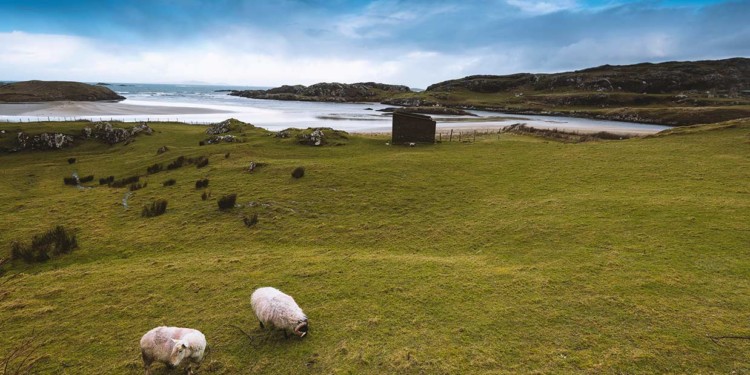The American dream of Ireland is all about thatched-roofed cottages, low stone walls, green pastures with white sheep, and pubs with peat fires.
That was the Ireland that received us when we arrived on the scene as transplanted Americans years ago, pre-Celtic Tiger. We invested in an old stone country house to restore, bought a pony for our daughter to learn to ride, cultivated gardens, drank tea, and huddled around the Stanley stove in the kitchen for warmth on rainy evenings.
Then came the boom. From our front-row seats, we watched as it chipped away at the Ireland of our American fantasies. From 1997 to 2007, this little green isle was awash with cash. The Irish had more money than ever in their history and more money than they knew what to do with. They built housing estates and fast-food franchises, bought posh townhouses and fancy cars…
“I bought a two-bedroom house in Dublin for 8 million quid today,” funny Irishman Tommy Tiernan quipped at the time. “Why? Because it was going to cost me 20 million quid the next day.”
As the cash flowed, the scene changed. The average Irishman no longer wanted to tend bar in a pub or run his family home as a B&B. The average Irishman had more ambitious plans and schemes. This was ok as immigrants from Eastern Europe and Africa were arriving on the scene to replace the working Irish. By the time we left Waterford, not a pub or a restaurant in town was staffed by Irish. Poles and Romanians took your order at the Burger King and served your carvery at Reginald’s Tower.
In 2008, suddenly, the money stopped flowing. Ireland hadn’t succeeded in building an economy, simply in shuffling around imported cash. It was a Ponzi scheme predicated on Irish selling real estate to other Irish then borrowing money to buy more real estate to sell to yet other Irish and on and on.
When the money dried up, the immigrants moved on, and the Irish had no choice but to become less ambitious. A year or two after the crash, a friend in the country told me about hundreds of Irish, including attorneys, accountants, and other professionals, lining up for jobs at McDonald’s.
Times, again, were tough.
But the Irish didn’t react as some folks might react to tough times. Maybe because the Irish have more experience with tough times than most folks. In fact, when the bottom fell out in 2008, the tougher times got, the happier the Irish seemed to become.
I shared this observation with an Irish friend living here in Panama City the other day, and I was surprised (and relieved) when he wasn’t insulted. He smiled… agreed.
“No question,” he told me. “We Irish aren’t happy unless we’re struggling. Big fancy cars and the high life… those things don’t suit us.”
Ireland made a big play at becoming part of Europe. But it’s not. It’s an enigma on the edge of Europe.
When left alone to be Ireland, this green island is one of the most friendly, welcoming, peaceful, and appealing places in the world to live. I speak from experience.
The very good news for you is that, now that the cash has run out and the job-seekers and foreign investors have migrated elsewhere, you have the opportunity again to experience the best of Irish life yourself. Ireland is again Ireland.
“We’re just eight or nine bad decisions away from real freedom,” Tommy Tiernan observes…
Kathleen Peddicord
P.S. The Emerald Isle and my time living on it are on my mind lately as they’re the stuff of my latest book, “At Home In Ireland.”
Part memoir, part travelogue, this book pulls back the curtain on how I got my start living and investing overseas… while sharing firsthand tales of adventure in the Auld Sod.
While I’d love to share this book with all of my Live And Invest Overseas readers, we can only give away 500 of these books…
Miss this chance, and you’ll have to head to Amazon to buy a copy for about US$17.
Head here instead to get your copy of At Home In Ireland.










